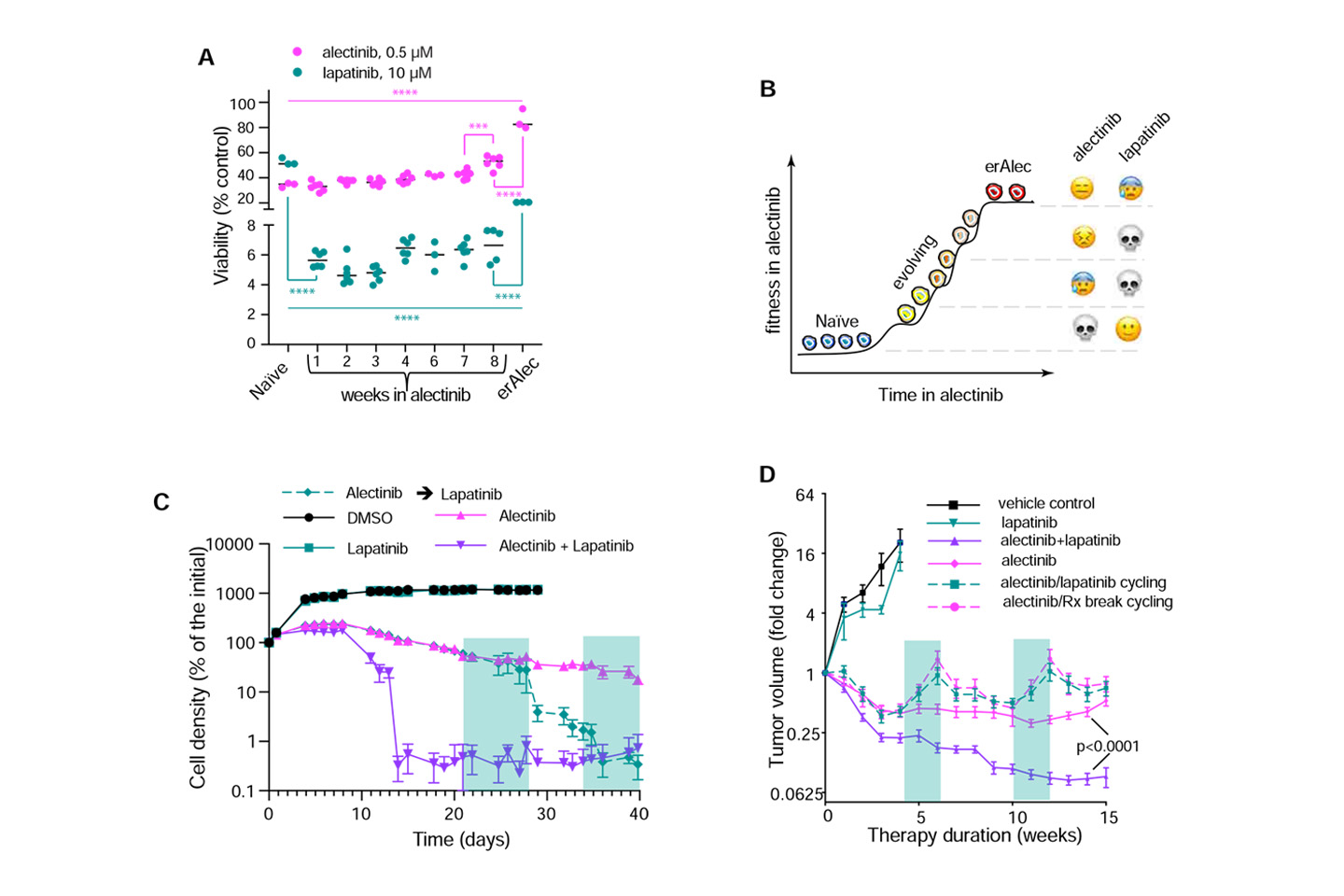Nara Yoon, PhD, assistant professor of mathematics and computer science, is doing important studies on the development of therapy resistance in advanced cancers. In a paper published in the journal Nature Communications, she describes how her computer mathematical models, in parallel with collaborators' molecular biology research, are revealing that resistance to targeted therapies develops gradually, in a series of adaptations to specific characteristics of the therapies.
Despite major strides in the treatment of cancer, the development of therapy resistance remains a major challenge for cancer researchers and oncologists. While much research has been done, and many discoveries made, on the mechanisms of resistance, understanding of how resistance evolves remains quite limited.
Motivated by this reality and the dire implications of therapy resistant cancer, Nara Yoon, PhD, assistant professor of mathematics and computer science at Adelphi University, and her colleagues* explored the evolution of therapy resistance, focusing on non-small cell lung cancer (NSCLC), a common form of lung cancer. They worked specifically with a subset of NSCLC cells in which the gene that produces Anaplastic Lymphoma Kinase (ALK) is disrupted. About 5 percent of people with NSCLC have this change in the ALK gene, which is associated with the cancer metastasizing to other parts of the body. This is known as ALK+ NSCLC.
Dr. Yoon and her collaborators studied ALK+ NSCLC cells in various ways. The researchers in the biological sciences designed and conducted experiments to grow the cancer cells in the presence of drugs that inhibit the ALK gene, and the researchers in bioinformatics analyzed the genomic data of the cells obtained by the biological experiments. Dr. Yoon and other mathematicians on the team developed and ran original mathematical modeling which can describe the likely scenarios of the cell growth.
The different scenarios are realized in silico—that is, by means of computer modeling or computer simulation—with different parameter values. When the simulated results with the various parameters were compared with the results of the biological experiments, the research team found a scenario that shows better consistency with the experiment than the others.
The group discovered that drug sensitivity and resistance can change at various rates in different cells within the same population. In addition, their research showed that, contrary to prevailing theory, therapy resistance may not be the result of a single mutational incident, but rather of a gradual, multifactorial adaptation to the drugs, using the mathematical model explained above. Cells can adapt to their surroundings and may be developing multiple cooperating adaptive changes in response to chemotherapeutic agents.

The mathematical model designed by Dr. Yoon and her team of applied mathematicians, which illustrates the cell population growth in virtual environments, is capable of describing two different scenarios—one based on the prevailing view that therapy resistance is the result of a single pivotal event in the affected cells, the other based on this group’s hypothesis that therapy resistance develops as a series of small events in cancer cells. The simulated cell populations in each scenario were compared to the cell populations in the biological experiments, and the results of the comparison indicated that the multistep scenario is more likely.
Applied mathematics is essential to cancer research, which is data intensive and biologically complex. Dr. Yoon’s mathematical modeling validated a model of therapy resistance development in advanced tumor cells that had not previously been understood. This presents a new way to look at therapy resistance in advanced tumors and is enormously important because each stage at which a change takes place in the cell—leading toward therapy resistance—is an opportunity for a new therapeutic intervention.
Dr. Yoon earned her bachelor’s degree with a double major in architecture and mathematics at Ewha Womans University in South Korea and her PhD in Applied Mathematics at Case Western Reserve University. Prior to coming to Adelphi University, she was a researcher in the Department of Translational Hematology and Oncology Research at the Cleveland Clinic in Ohio. There she made many of the lasting connections she has with her collaborators on this research project.
Citation:
Vander Velde, R., Yoon, N., Marusyk, V. et al. Resistance to targeted therapies as a multifactorial, gradual adaptation to inhibitor specific selective pressures. Nat Communications 11, 2393 (2020). https://doi.org/10.1038/s41467-020-16212-w
*Co-authors: https://www.nature.com/articles/s41467-020-16212-w#author-information
- Department of Cancer Physiology, H Lee Moffitt Cancer Centre and Research Institute, Tampa, FL, USA
Robert Vander Velde, Viktoriya Marusyk, Daria Miroshnychenko, Diego Lozano-Peral, Bina Desai, Olena Balynska and Andriy Marusyk - Department of Molecular Medicine, University of South Florida, Tampa, FL, USA
Robert Vander Velde and Andriy Marusyk - Department of Translational Hematology and Oncology Research, Cleveland Clinic, Cleveland, OH, USA
Nara Yoon, Arda Durmaz, Andrew Dhawan, Mohamed Abazeed, Omar Mian and Jacob Scott - Systems Biology and Bioinformatics, Case Western Reserve University School of Medicine, Cleveland, OH, USA
Arda Durmaz and Jacob Scott - Supercomputer and Bioinnovation Center, University of Málaga, Málaga, Spain
Diego Lozano-Peral - University of South Florida Cancer Biology PhD Program, Tampa, FL, USA
Bina Desai